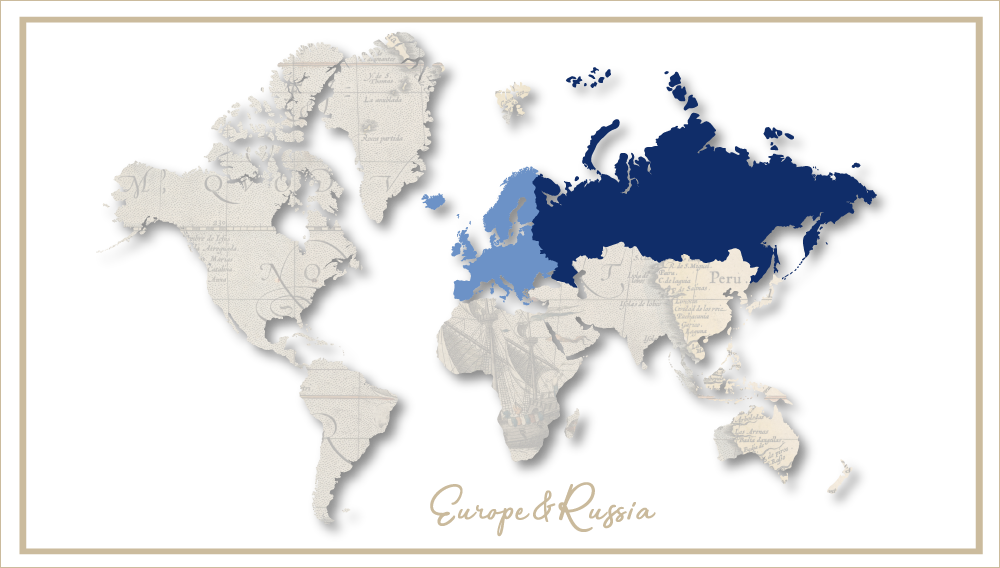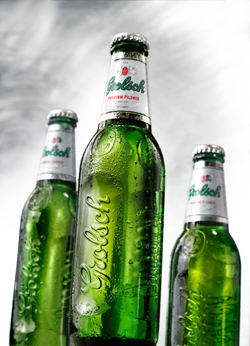Anheuser-Busch dumbfounded as SABMiller buys Royal Grolsch
For SABMiller it must have been a stroke of luck. Having lost the Amstel contract in South Africa, the brewer was keen to find another Germanic sounding brand with a super-premium potential to satisfy consumer demand.
The lure of a German or ersatz-German beer brand. Loyal readers of Brauwelt will remember that Prince Luitpold of Bavaria, a brewer himself, did a bit of crystal ball gazing for us in our turn-of-the-millennium edition seven years ago. He wrote that the lure of German or German sounding beer brands would continue unabatedly. It did not matter whether the brands were properly German or just faux. For as long as consumers the world over thought that they got something with a Germanic heritage, fine. For proof, witness the growth of brands like Heineken, Carlsberg, Pilsner Urquell (yes, even that brand) and Grolsch.
SABMiller, the clearheaded strategists that they are, must have had their eyes on the Grolsch brand for a while. Not only does it have the right pedigree - Royal Grolsch was founded in 1615 in the town of Grolle, today called Groenlo, close to the German border – it is also stockmarket-listed (since 1984) and some of its shareholders may be susceptible to a generous offer.
In fact, SABMiller were in dire need of a brand like Grolsch. For one, there was the issue of Amstel in South Africa that needed to be solved. Although SABMiller had managed to twist Heineken’s arm really hard for decades, SABMiller knew that this would not go on for much longer.
And indeed, in March this year, Heineken terminated the licensing agreement with SABMiller in South Africa under which SABMiller brewed, marketed and distributed Amstel lager. This was a massive blow to SABMiller and not just financially. The Amstel brand represented 9 percent of SABMiller’s beer volumes in South Africa, which translated into a volume of slightly less than 3 million hl.
Sales of Amstel in the year to 31 March 2007 accounted for USD 300 million of SABMiller’s South African revenues. It was reported that this amounted to some USD 80 million of earnings before interest, tax and amortisation.
People familiar with the situation wrote that the contract had been a bone of contention between the two companies for some time. SABMiller may have done a great job in developing the brand in South Africa, but the terms of the contract meant that Heineken - the brand owners - got very little from the deal. After failing to renegotiate, Heineken went ballistic, it was reported and decided to sell Amstel themselves through an outfit that Heineken had formed with Diageo to service the South African market. There was even talk that Heineken would build a brewery in South Africa, although nothing has come of that yet.
In an effort to make up for the loss of Amstel both production-wise (suddenly losing that much volume means that your production efficiency goes down the drain) and market-wise, SABMiller put a lot of effort into marketing Pilsner Urquell. It’s the premium price segment where all the action is these days in South Africa. Last year alone the premium segment grew well above 20 percent while the total market managed to nudge up 1 percent.
However, Pilsner Urquell ain’t Amstel. So SABMiller must have decided that Grolsch, a distant number two to Heineken in the Dutch market with just 15 percent market share, would not just solve their problems in South Africa, it would also render them a big service in Russia.
According to Baltic Beverages Holding (BBH), in Russia the beer market grew by 22.7 percent during the first half of 2007. The market benefited from unseasonably mild weather, particularly in the first quarter, as well as the continuing positive shift towards beer fuelled by rising disposable incomes and some lasting impact from the supply disruption in wine and spirits in the second half of 2006.
Brewers targeting the Russian beer market are increasingly shifting their focus to premium lager, despite the fact that large numbers of Russian consumers still cannot afford to buy it. SABMiller’s major competiors in the Russian market – BBH and Heineken – both have their own international brands to push. But where does that leave SABMiller? Again, only with Pilsner Urquell.
This is where a brand like Grolsch could come in handy too.
SABMiller has said it will bid USD 1.2 billion (or EUR 816 million) for Grolsch, which produced 3.2 million hl of beer in 2006, half of which were sold outside the Netherlands.
In a joint statement, the companies said Grolsch would back the EUR 48.25 (USD 70.57) per share offer, which they said offered a premium of more than 80 percent to Grolsch’s average share price over the past month.
A formal offer will be launched in January 2008 and is subject to regulatory approvals and a 75 percent acceptance by Grolsch shareholders, the companies said. The offer is endorsed by Grolsch’s board and SABMiller has received the backing from the key family shareholders which own 37 percent of the Dutch brewer.
Both companies report earnings twice a year. For the six months through 30 June 2007, Enschede-based Grolsch’s earnings were EUR 7.6 million euros (USD 11 million) on sales of EUR 164 million (USD 216 million).
SABMiller had net profit of USD 958 million (EUR 654 million), on sales of USD 10.78 billion (EUR 7.36 billion) in the same period.
Analysts were reported as saying that the deal looked a good one for SABMiller, despite the hefty price.
SABMiller is paying generous 14.7 times 2006 reported EBITDA earnings. This compares with similar deals such as SABMiller buying Italy’s Peroni in 2003 at 12.6 times, and InBev purchasing Germany’s Beck’s at 13 times in 2001.
As far as dealmaking is concerned, the Grolsch acquisition seems wholly rational. What gives the deal its tut-tutting quality is that Anheuser-Busch is the exclusive U.S. importer of Grolsch, which includes the small, but growing Grolsch Amber Ale, Grolsch Light Lager and Grolsch Blonde Lager. The import-deal between Grolsch and Anheuser-Busch was signed in early 2006 and commenced in 2007.
Although Grolsch’s volumes in the U.S. are not huge – they came to 150,000 hl in 2005 – the fact that Grolsch was able to carry on discussing a take-over with SABMiller while Anheuser-Busch was unaware or unwilling to grab the opportunity themselves, makes you wonder about Anheuser-Busch’s strategic skills.
Or, it gives you reason to ponder whether the rumour is actually true that Anheuser-Busch and InBev are in merger talks. If Anheuser-Busch and InBev were to merge, Anheuser-Busch would not require a Grolsch. The gentlemen from St. Louis could take their pick from InBev’s massive brand portfolio which includes a German brand like Beck’s.
In any case, SABMiller announced that they did not anticipate a change to existing distribution agreements in the U.S., UK, Canada, Australia, and certain smaller markets at this time. Perhaps they will even enjoy sitting down with Anheuser-Busch to discuss what Anheuser-Busch is planning on doing for Grolsch. And see them squirm.
| The focal point of Royal Grolsch’s commercial activities |



